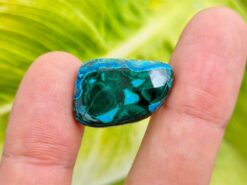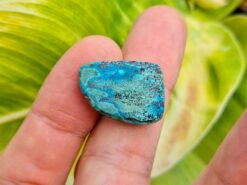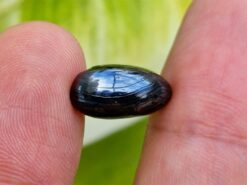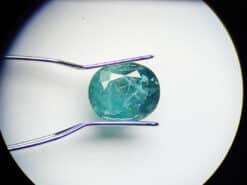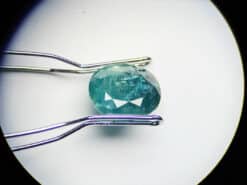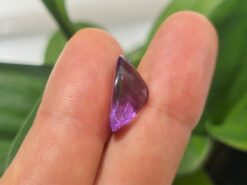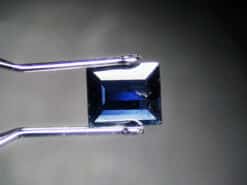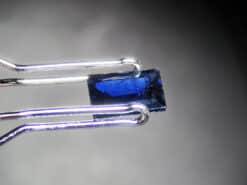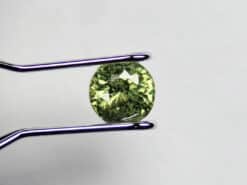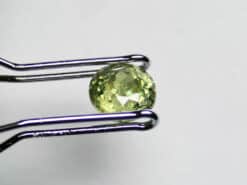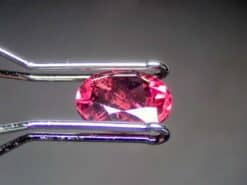Celestite
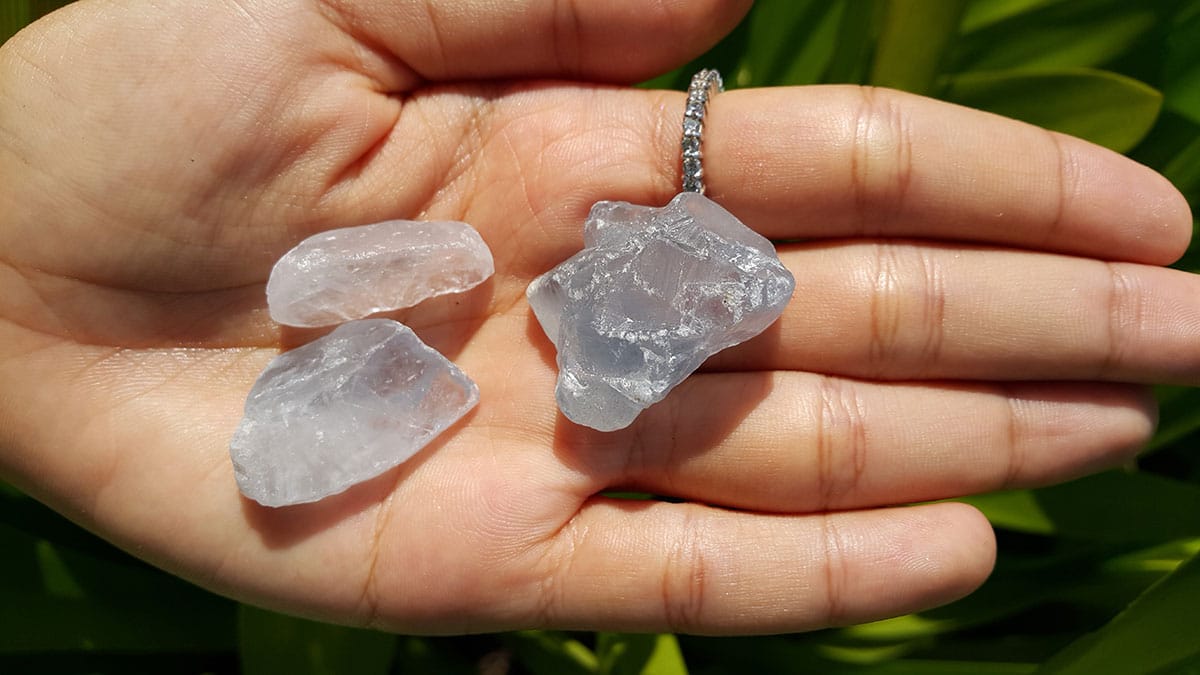
Buy natural gemstones in our shop
Celestite meaning
Celestite or celestine is a mineral consisting of strontium sulfate (SrSO4). The mineral is named for its occasional delicate blue color. Celestine is the principal source of the element strontium, commonly used in fireworks and in various metal alloys.
The stone derives its name from the Latin word caelestis meaning celestial, which in turn is derived from the Latin word caelum meaning sky or heaven.
Celestite occurs as crystals, and also in compact massive and fibrous forms. It is mostly found in sedimentary rocks, often associated with the minerals gypsum, anhydrite, and halite.
The mineral is found worldwide, usually in small quantities. Pale blue crystal specimens are found in Madagascar.
The skeletons of the protozoan Acantharea are made of celestine, unlike those of other radiolarians which are made of silica.
In carbonate marine sediments, burial dissolution is a recognized mechanism of celestine precipitation. It is sometimes used as a gemstone.
Crystals are found in some geodes. The world’s largest known geode, a geode 35 feet (11 m) in diameter at its widest point, is located near the village of Put-in-Bay, Ohio, on South Bass Island in Lake Erie.
The geode has been converted into a viewing cave, Crystal Cave, with the crystals which once composed the floor of the geode removed. The geode has crystals as wide as 18 inches (46 cm) across, estimated to weigh up to 300 pounds (140 kg) each.
Identification
- Color: Colorless, white, pale blue, pink, pale green, pale brown, black
- Crystal habit: Tabular to pyramidal crystals, also fibrous, lamellar, earthy, massive granular
- Cleavage: Perfect on {001}, good on {210}, poor on {010}
- Fracture: Uneven
- Tenacity: Brittle
- Mohs scale hardness: 3 – 3.5
- Luster: Vitreous, pearly on cleavages
- Streak: white
- Diaphaneity: Transparent to translucent
- Specific gravity: 3.95 – 3.97
- Optical properties: Biaxial (+)
- Refractive index: nα = 1.619 – 1.622 nβ = 1.622 – 1.624 nγ = 1.630 – 1.632
- Birefringence: δ = 0.011
- Pleochroism: Weak
- 2V angle: Measured: 50° to 51°
- Dispersion: Moderate r < v
- Ultraviolet fluorescence: Short UV=yellow, white blue, long UV=yellow, white blue
Celestite crystal meaning and healing properties benefits
The following section is pseudo scientific and based on cultural beliefs.
The stone is a sweet blue high vibration crystal, with a lovely gentle uplifting energy. It has strong metaphysical properties that will help you to develop the psychic gifts of prophecy or precognition. It aids mental clarity as it clears and sharpens mental faculties and assists spiritual healing.
Celestite chakras
It carries a soft blue crystal energy that stimulates the Throat Chakra, the voice of the body. It is, in essence, a pressure valve that allows energy from the other chakras to be expressed. When the Throat Chakra is in balance and open, it allows for the expression of what we think and what we feel.
FAQ
What can celestite be used for?
The stone is best used as a focus point of meditation, prayer, or mindfulness. This stone does very well as a visual piece in private space used for mindfulness practices.
What is celestite used to make?
Celestine is a principal source of the element Strontium. It has been used in the manufacture of fireworks, because of its ability to burn with a bright red flame. It has also found some use in the manufacture of certain types of glass.
Where should you put celestite?
Keep the gemstone on your bedside table, so you can connect with its soothing energy all night long.
Can I wear cristal celestite?
The crystal is sacred to the third eye chakra, so if you are interested in using it to develop psychic vision through the use of this chakra, wear it as near as possible to the center of your forehead, the seat of the third eye chakra’s power.
Is celestite stone good for sleep?
Yes it is. Celestite is also known as the stone of the angels and infuses us with grace and a desire for calm and tranquility.
What stone goes well with celestite?
When combined with celestite, clear quartz will draw off negative energies of all types of neutralizing background radiation including electromagnetic smoke and fog or petrochemical emanations. The stones will revitalize and balance the spiritual, physical, emotional, and mental planes.

